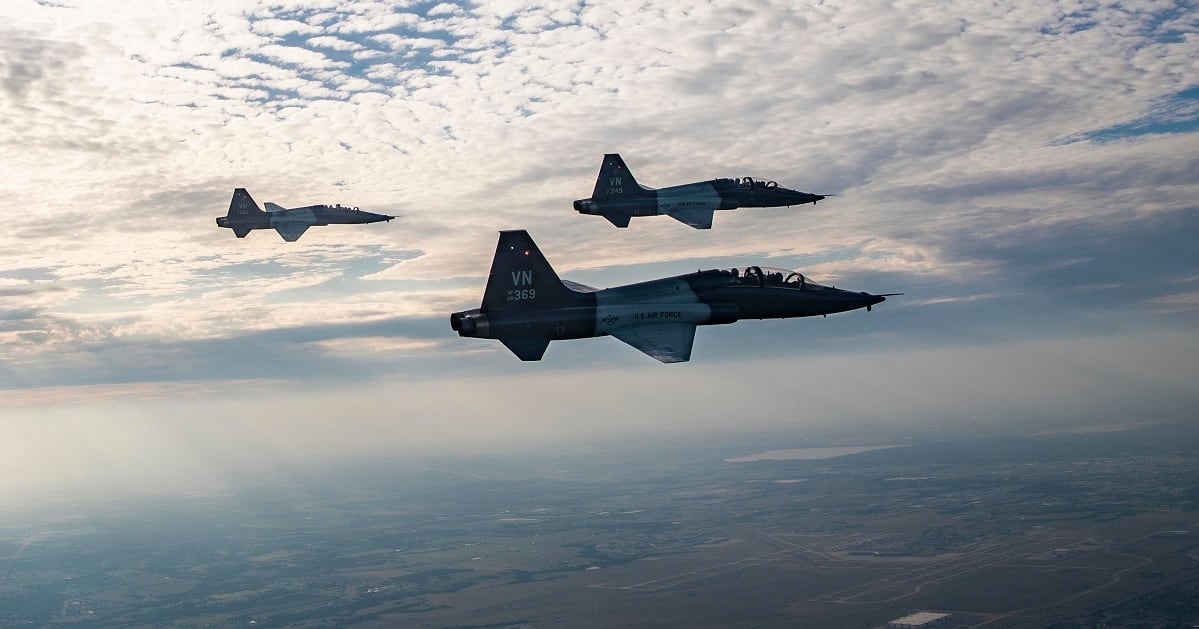Racking up flight hours before attending undergraduate pilot training is still an accurate predictor of whether students will excel, according to a study the University of Texas-San Antonio conducted as part of a partnership with the Air Education and Training Command.
The finding backs up a key component of the Pilot Candidate Selection Method that the Air Force uses when issuing pilot slots — despite the service’s understanding that reliance on previous flight hours could hinder diversity among candidates.
“This study was really valuable because we are looking hard right now at rated diversity and the PCSM really values flight hours, which can be difficult to obtain for potential candidates depending on their socio-economic background,” said Lt. Col. Steven Dillenburger, commander of AETC’s Studies and Analysis Squadron, in a news release. “We want to make sure we aren’t eliminating potential candidates based on (an inconsequential) piece of data.”
Active-duty officers who want to become pilots ahead of their commissioning are evaluated in several ways to determine their PCSM score, according to a 2017 Rand Corps study. The PCSM score is calculated by merging results from the Air Force Officer Qualifying Test that judges general aptitude and knowledge of aviation, and a the results from a computerized psychomotor test battery known as the Test of Basic Aviation Skills.
Those test scores are then weighed alongside information including previous flight hours to calculate a candidate’s PCSM score.
“We use the PCSM right now to help us determine who gets an undergraduate pilot training slot,” Dillenburger said. “The intent in working with [University of Texas-San Antonio] in this partnership was to help us gather the data to validate if the background data the PCSM tool indicates is a valid measuring stick to go by or perhaps needs updating.”
The study was conducted between June and October 2019, and was based off roughly 10,000 sets of raw data that included a candidate’s GPA, Air Force Officer Qualifying Test score and previous flight hours.
“What the study found was in line with what we value already from the PCSM, in that the AFOQT scores, number of previous flight hours and any potential previous aeronautical ratings most positively relate to a successful student,” Dillenburger said.
That said, some changes could get the green light soon — potentially opening a door for more diversity among pilots.
“Both active duty and the [Air National Guard] are pursuing initiatives aimed at lower income potential pilot candidates to offset the high cost of pursuing a private pilots license,” Dillenburger said in a statement to Air Force Times. “These initiatives would increase PCSM scores for lower income candidates as the candidates would increase their flying hours.”
The study comes as the service is seeking to address a pilot shortage. The Air Force said in its March 2019 budget proposal that it was aiming to produce 1,480 pilots in 2020, but admitted this month that the service will fall short of that goal.
Instead, Air Force spokeswoman Ann Stefanek said that approximately 1,300 pilots will be produced in 2020. The goal in future years is at least 1,480 annually, Stefanek said.
“The [Air Force] is developing several initiatives to help us meet and sustain these higher production levels,” Stefanek said.
“The planned growth in production in conjunction with a continued focus on retaining our current pilots is critical to restoring health,” Stefanek said. “While we’ve arrested the decline, we still have several years of focused production and retention efforts to completely stop the pilot shortage.”





